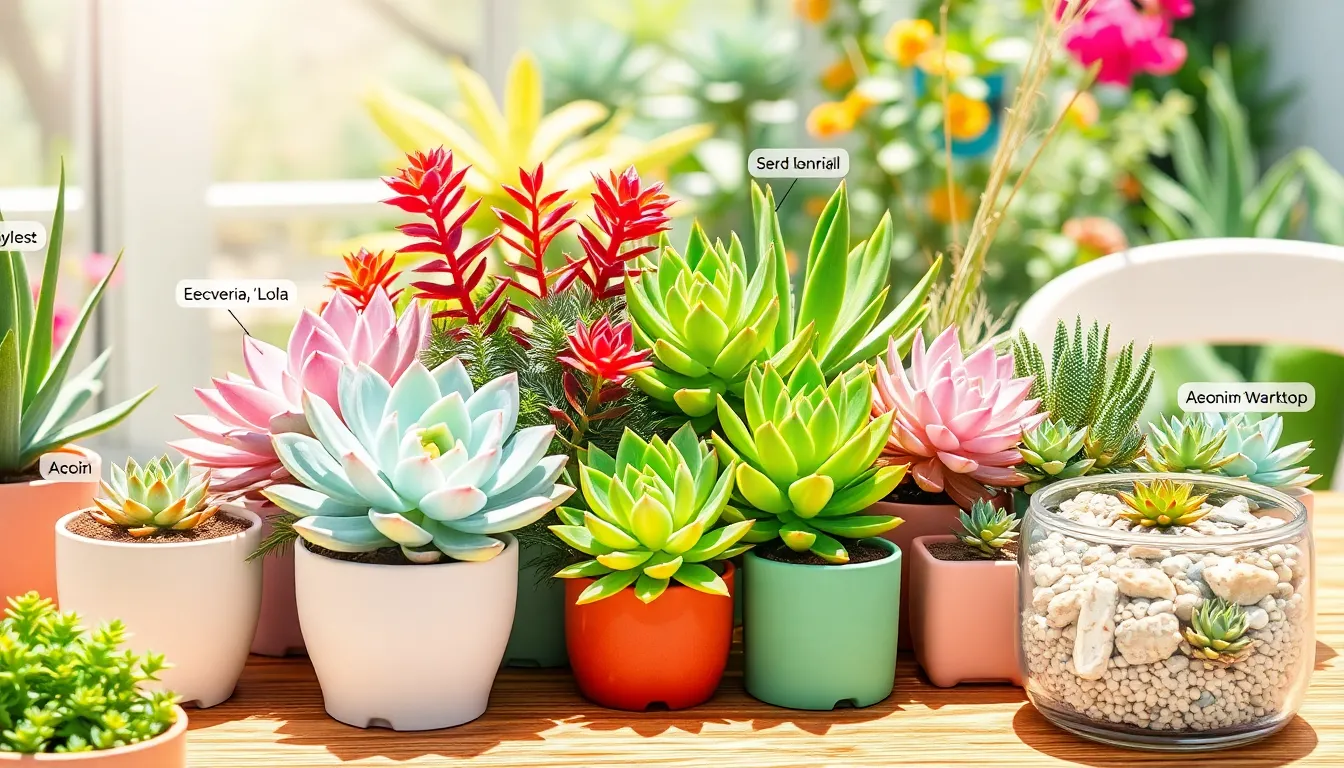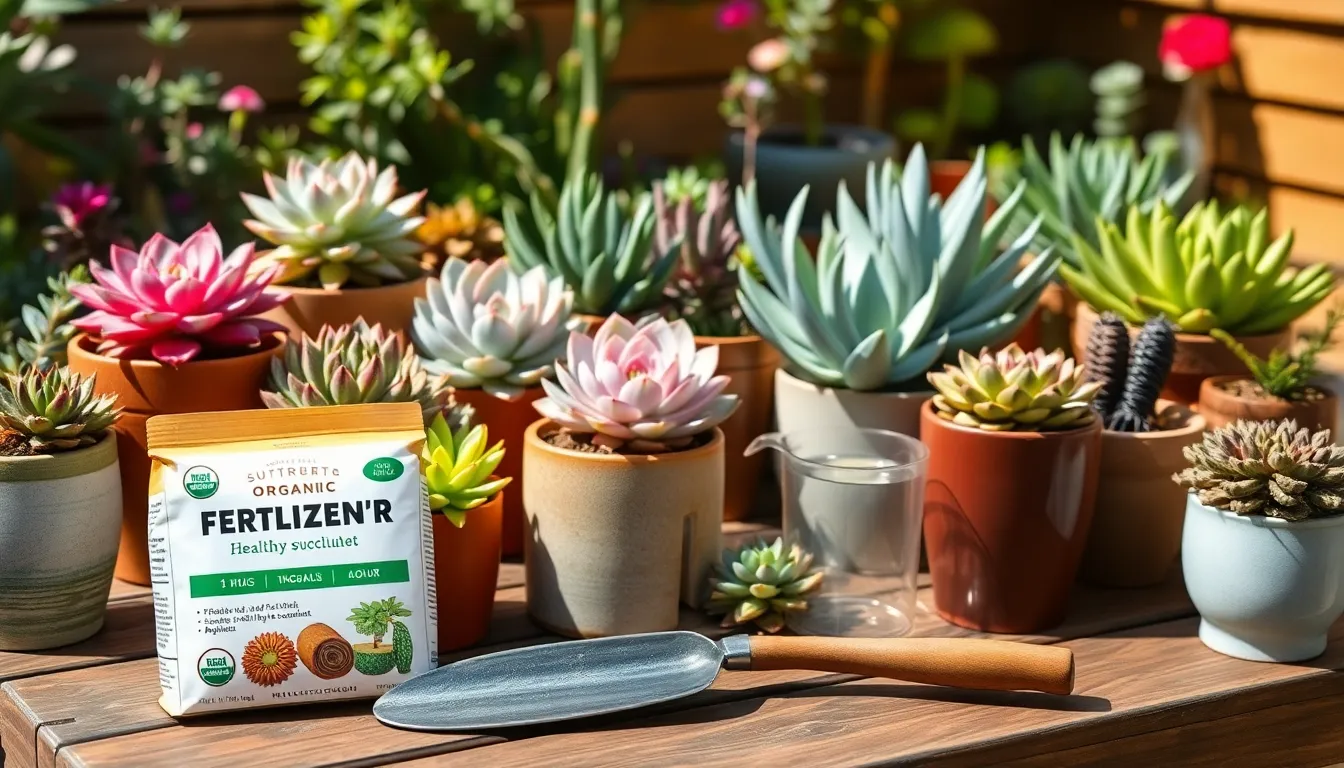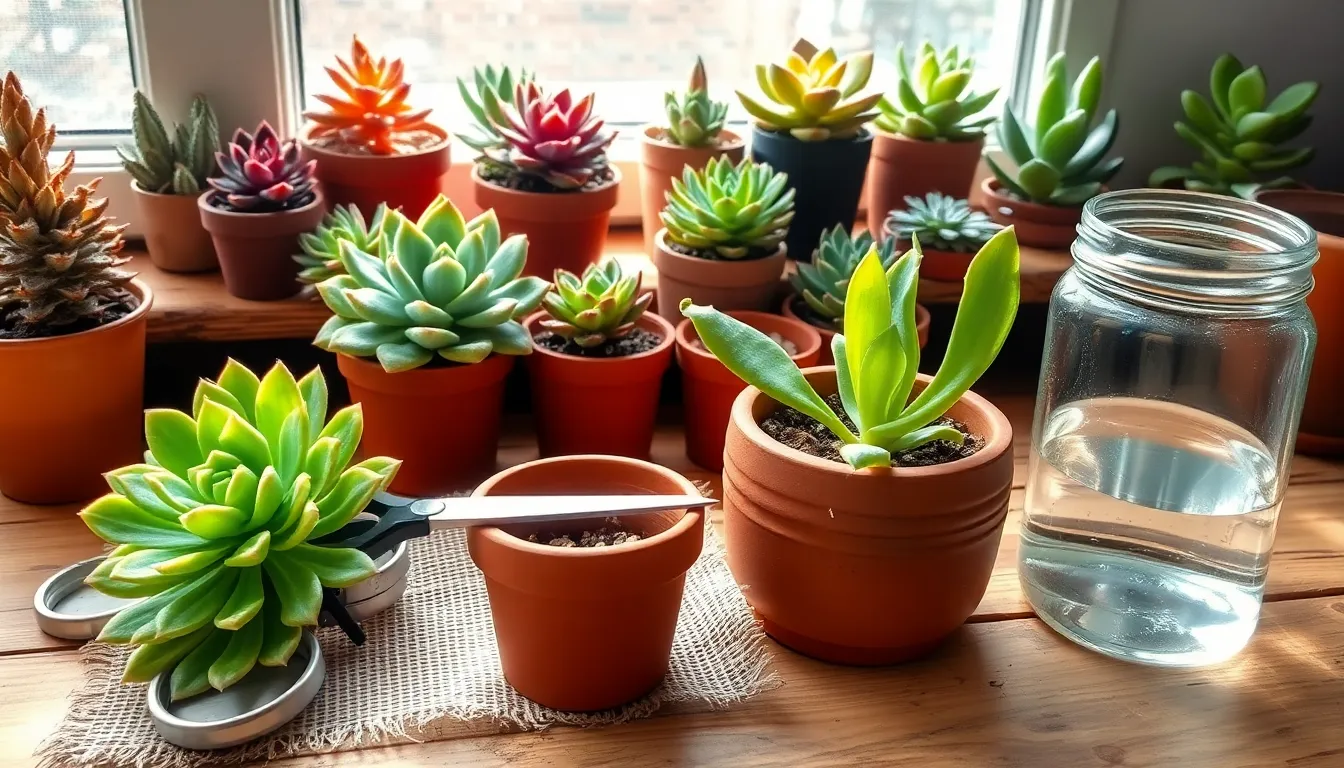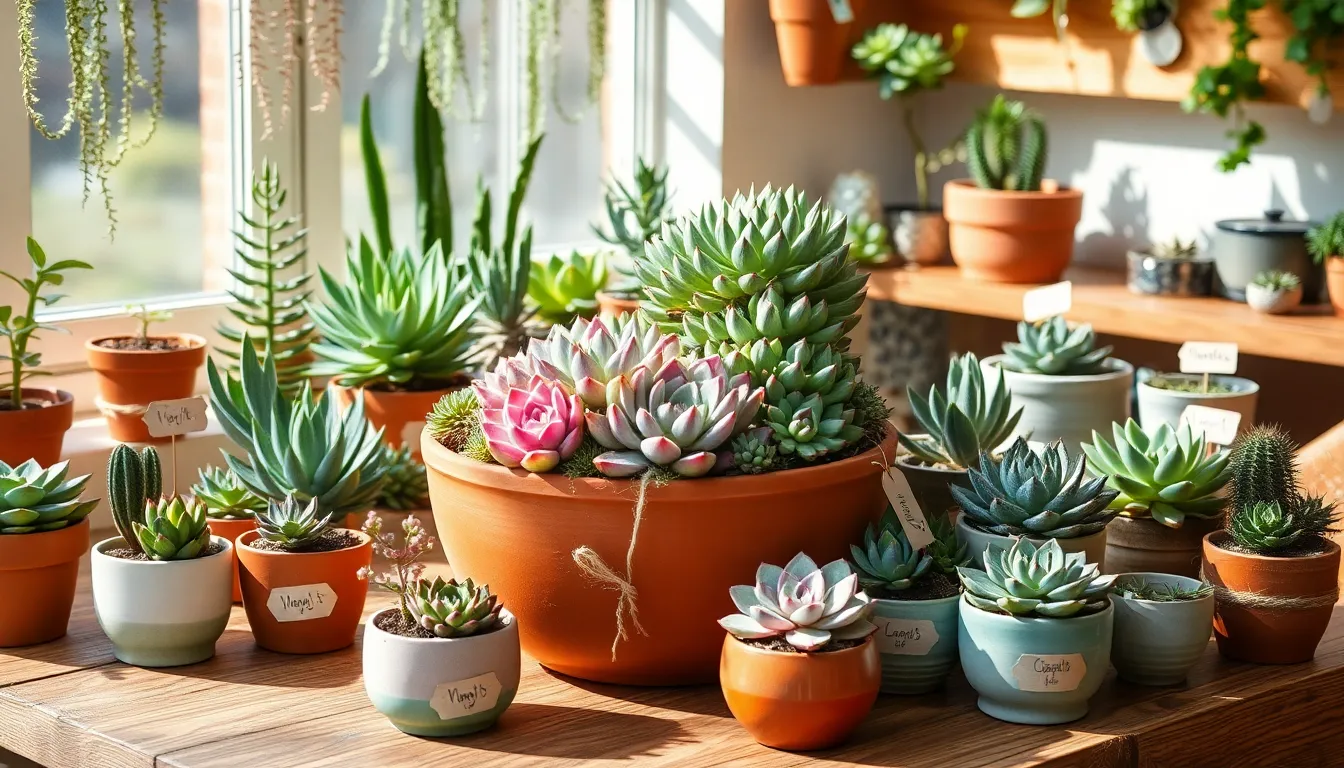Succulents have captured the hearts of plant enthusiasts worldwide, transforming windowsills, desks, and garden corners into vibrant displays of natural art. These enchanting plants, with their unique textures and fascinating forms, offer an alluring blend of beauty and resilience that appeals to both novice gardeners discovering their green thumbs and seasoned experts looking to expand their botanical repertoire. Whether you’re just beginning your succulent journey or have been nurturing these remarkable plants for years, the appeal of a well-curated succulent collection is undeniable.
In this article, we will take you on a delightful tour of 11 succulents that are as photogenic as they are easy to care for, perfect for adorning your home and lighting up your Instagram feed. You’ll explore a diverse array of species, each with its own personality and charm, and learn practical tips to keep them thriving in any environment. From the ethereal beauty of the String of Pearls to the striking patterns of the Echeveria, these succulents are sure to inspire your inner gardener and elevate your plant game. Get ready to transform your space with these Instagram-worthy succulents that are as rewarding to grow as they are to admire.
Captivating Cacti: A Visual Treat
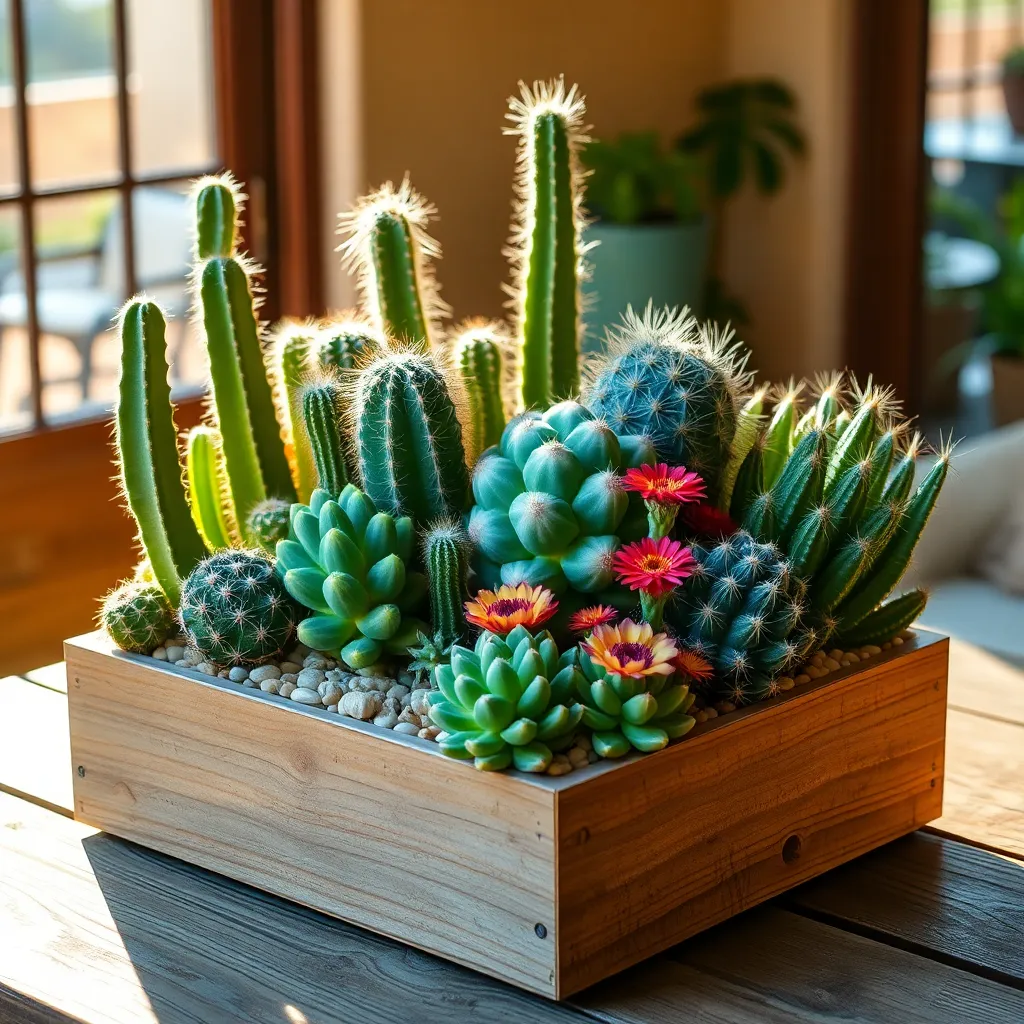
Few plants are as stunningly unique as cacti, making them a captivating choice for any plant lover. Their diverse shapes and striking textures provide a visually appealing contrast in any indoor or outdoor garden.
When caring for cacti, proper sunlight is crucial—these plants thrive in bright, direct light. Placing them on a sunny windowsill or in a well-lit room ensures they receive the energy they need to grow healthily.
Cacti prefer a gritty, well-draining soil mix to prevent root rot, which can be achieved by using a specialized cactus potting mix. For an optimal blend, you can mix regular potting soil with sand or perlite to enhance drainage capabilities.
Watering cacti requires a balance: infrequent but thorough watering is key. Allow the soil to completely dry out between waterings, typically watering every two to four weeks, adjusting for humidity and season.
For advanced gardeners, consider experimenting with propagation to expand your collection. Propagating cacti from cuttings or seeds can be a rewarding challenge, offering a way to create new plants from existing favorites.
Aloe Vera: Beauty with Benefits
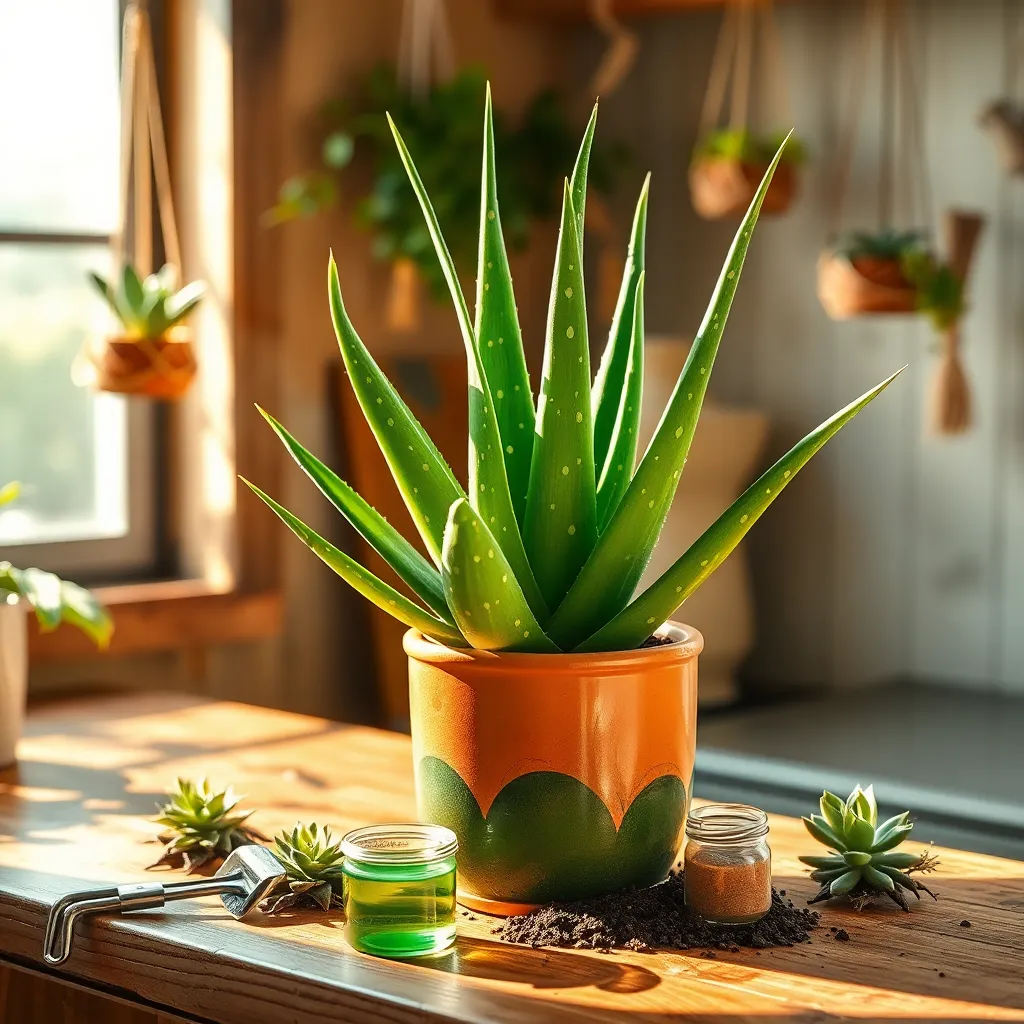
Aloe Vera is not just a striking succulent; it’s also packed with numerous benefits that make it a must-have for plant enthusiasts. Known for its soothing gel, this plant is perfect for those who love both decorative greenery and practical utility.
To ensure your Aloe Vera thrives, plant it in a well-draining cactus mix or a blend of sand, perlite, and potting soil. This combination prevents root rot, a common issue with succulents, by allowing excess water to flow out easily.
Place your Aloe Vera in a spot that receives abundant indirect sunlight, like a south or west-facing window. Direct sunlight can scorch its leaves, so be mindful of positioning to maintain the plant’s vibrant green color.
Watering should be done sparingly, about once every three weeks, ensuring the soil is completely dry between waterings. During winter, reduce watering even further, as the plant’s growth slows down significantly in cooler months.
For advanced gardeners, propagating Aloe Vera from offsets—small rosettes that grow at the base—is a rewarding process. Simply remove the offsets with a clean, sharp knife and let them dry for a day before planting in their own pots.
Aloe Vera is not only low-maintenance but also forgiving, making it an excellent choice for beginners eager to start their succulent journey. With the right care, it will flourish and provide both beauty and utility in any home.
Echeveria Elegance: Picture-Perfect Rosettes
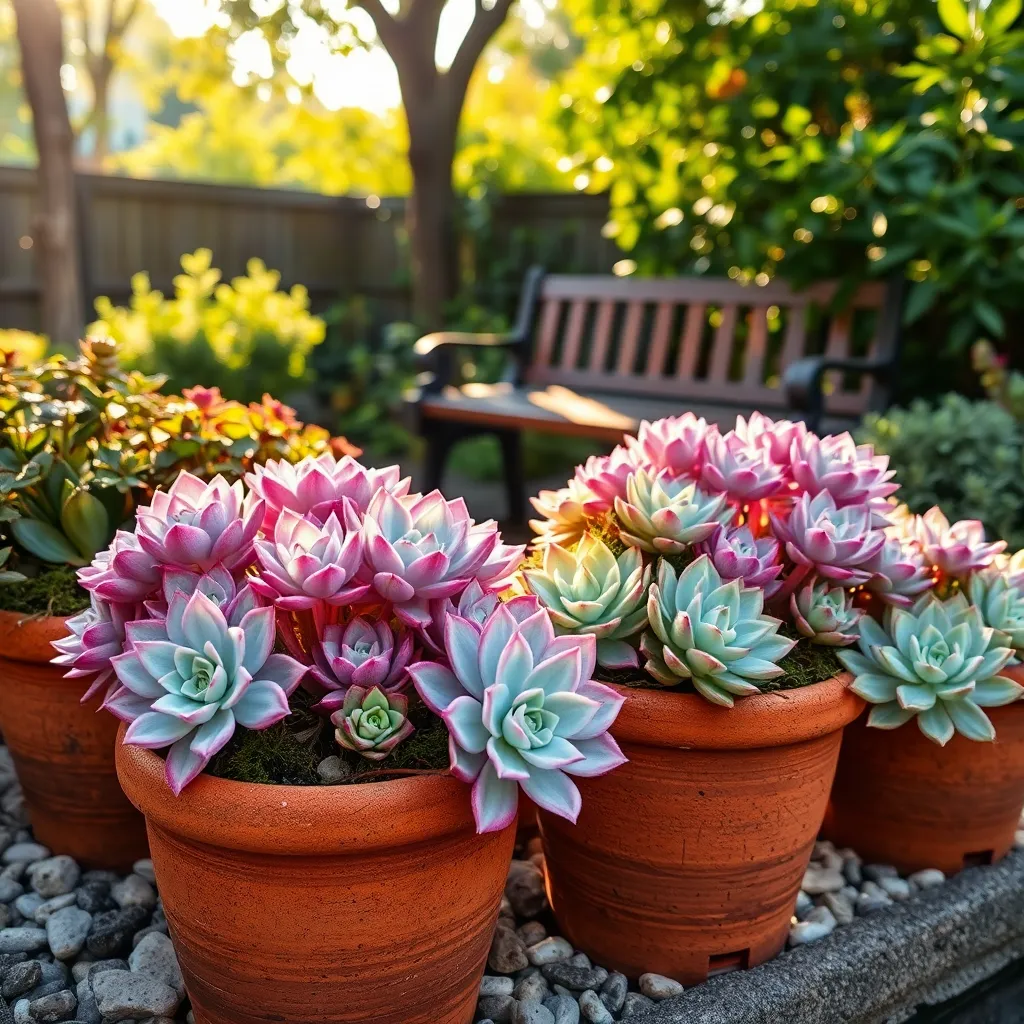
Renowned for their stunning symmetry, Echeveria Elegance is a true testament to nature’s artistry, making them a favorite among succulent enthusiasts. These succulents form compact, picture-perfect rosettes that can add a touch of elegance to any indoor or outdoor garden setup.
To keep your Echeveria thriving, it’s essential to provide plenty of bright, indirect light, as this encourages their vibrant colors. Ideally, place them on a sunny windowsill or in a well-lit room to ensure they receive the necessary light exposure.
Watering should be done sparingly but thoroughly, allowing the soil to dry completely between waterings. Overwatering is the most common mistake, so it’s crucial to remember that Echeverias prefer the ‘soak and dry’ method.
For more advanced care, consider using a cactus or succulent potting mix, which ensures excellent drainage and prevents root rot. Adding a layer of pebbles on top of the soil can enhance both the plant’s aesthetic appeal and its drainage efficiency.
Sedum Spectacle: Vibrant Green Hues
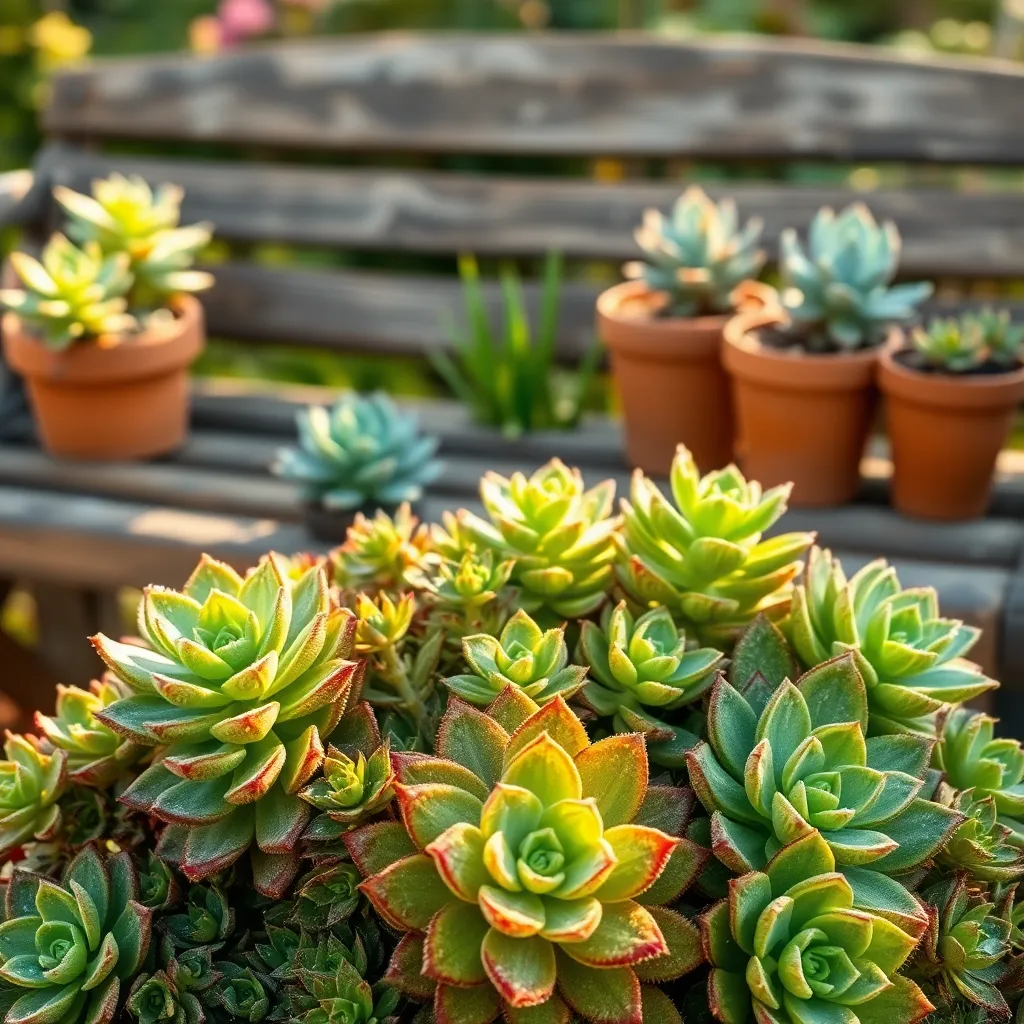
Among the most mesmerizing succulents, sedums stand out with their vibrant green hues and unparalleled resilience. These beauties thrive in well-draining soil, making them perfect for rock gardens and container arrangements alike.
To ensure your sedums flourish, plant them in a mix of cactus soil and perlite to enhance drainage. Water sparingly, allowing the soil to dry completely between waterings, as too much moisture can lead to root rot.
Sedums are sun lovers, so position them in a spot that receives at least six hours of sunlight a day. For those living in areas with intense summer heat, a little afternoon shade can help prevent leaf scorch.
For gardeners seeking a lush, carpet-like effect, consider mixing different sedum varieties. This will not only add texture and depth to your garden but also provide a stunning visual contrast when they bloom in late summer.
Jade Plant: Prosperity in Pots
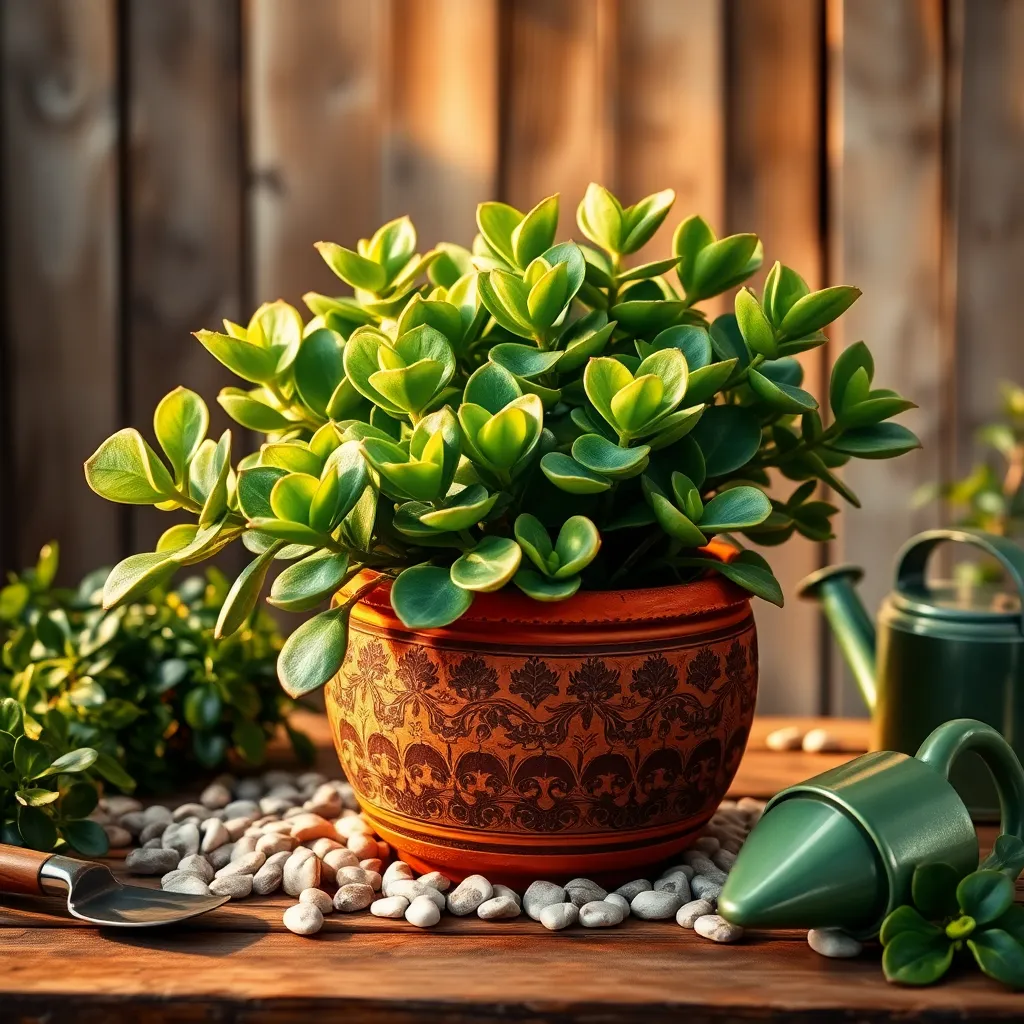
The Jade Plant, also known as Crassula ovata, is a beloved symbol of prosperity and good fortune. Its thick, fleshy leaves are a hallmark of this succulent, making it a perfect choice for adding a touch of elegance to any indoor space.
To ensure your Jade Plant thrives, place it in a spot where it can receive plenty of bright, indirect sunlight. If direct sunlight is unavoidable, aim for morning sun and provide some shade in the afternoon to prevent leaf scorching.
Watering is crucial for maintaining a healthy Jade Plant; allow the soil to dry out completely between waterings. Overwatering can lead to root rot, so it’s better to err on the side of underwatering—especially during the winter months when the plant is dormant.
For optimal growth, use a well-draining potting mix specifically designed for succulents. Adding perlite or coarse sand can enhance drainage, ensuring your Jade Plant’s roots remain healthy and aerated.
- Choose a pot with drainage holes to prevent water accumulation.
- Fertilize sparingly with a balanced, water-soluble fertilizer during the growing season.
- Prune regularly to maintain the desired shape and encourage branching.
Advanced gardeners might consider propagating Jade Plants from leaf or stem cuttings, which is both rewarding and straightforward. Simply allow cuttings to callous over for a few days before planting them in the same well-draining soil used for mature plants.
With proper care, Jade Plants can live for many years, becoming a cherished part of your indoor garden. Their resilience and beauty make them a must-have for both beginner and experienced plant enthusiasts alike.
Zebra Plant: Striking Striped Leaves
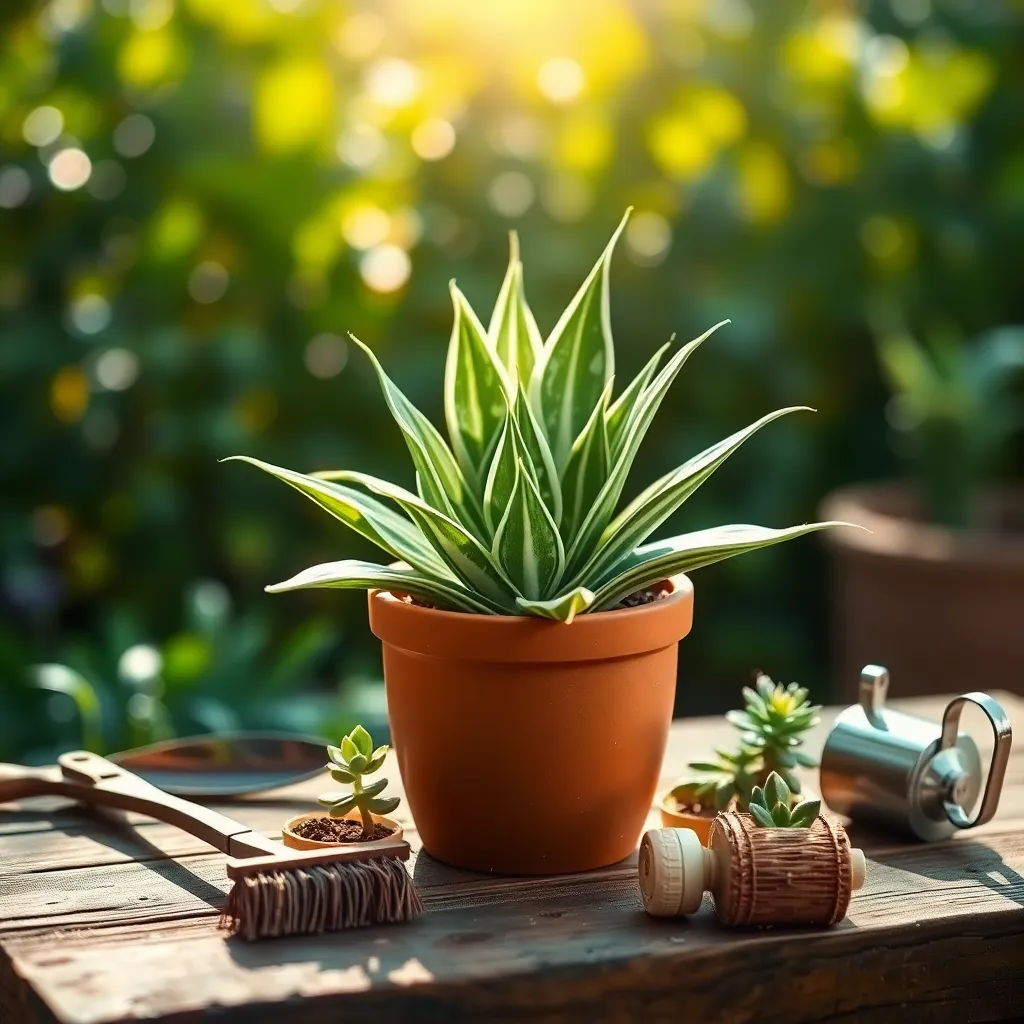
The Zebra Plant, known for its striking striped leaves, is a showstopper in any succulent collection. Its unique patterns make it an Instagram favorite, drawing attention with just a glance.
Providing the right care is essential to keep your Zebra Plant thriving. It prefers bright, indirect light, which helps maintain its vibrant leaf stripes without scorching them.
Watering this succulent correctly is crucial; let the soil dry out completely between waterings to prevent root rot. During the growing season, a light watering every 2-3 weeks should suffice, while in the winter, less frequent watering is ideal.
For optimal growth, plant your Zebra in a well-draining soil mix, such as one designed specifically for cacti and succulents. Adding a layer of small pebbles or grit to the top of the soil can enhance drainage and keep the base of the plant dry.
Advanced gardeners might experiment with propagation through offsets, which can be gently removed and replanted. This not only helps manage the plant’s size but also allows you to share its beauty with friends.
String of Pearls: Cascading Charm
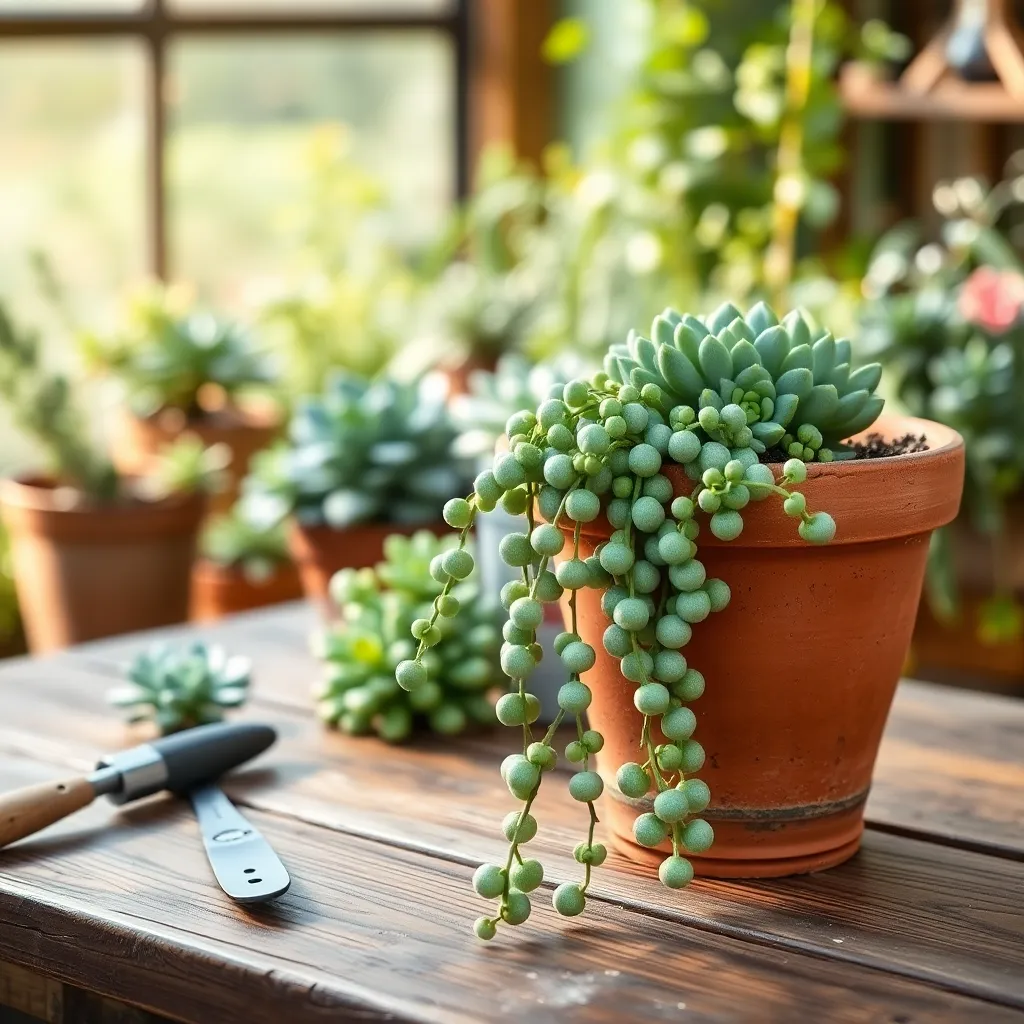
String of Pearls (Senecio rowleyanus) is a visually stunning succulent known for its unique, bead-like leaves that cascade elegantly from hanging baskets. Providing bright, indirect light is key to ensuring the plant thrives and maintains its vibrant green hue.
These succulents prefer a well-draining soil mix, ideally a cactus or succulent blend, to prevent root rot. Water sparingly, allowing the top inch of soil to dry out completely between waterings to mimic their natural arid habitat.
To encourage fuller growth, consider gently pinching back the strands; this can stimulate new shoots and create a more lush appearance. For those in humid climates, increase air circulation around the plant to prevent mold or mildew on the leaves.
Advanced gardeners might explore propagation by cutting a healthy strand and placing it on top of moist soil, where it will root and start new growth. Regularly check for pests, such as aphids or mealybugs, which can be treated with neem oil or insecticidal soap.
Panda Plant: Fuzzy and Fun
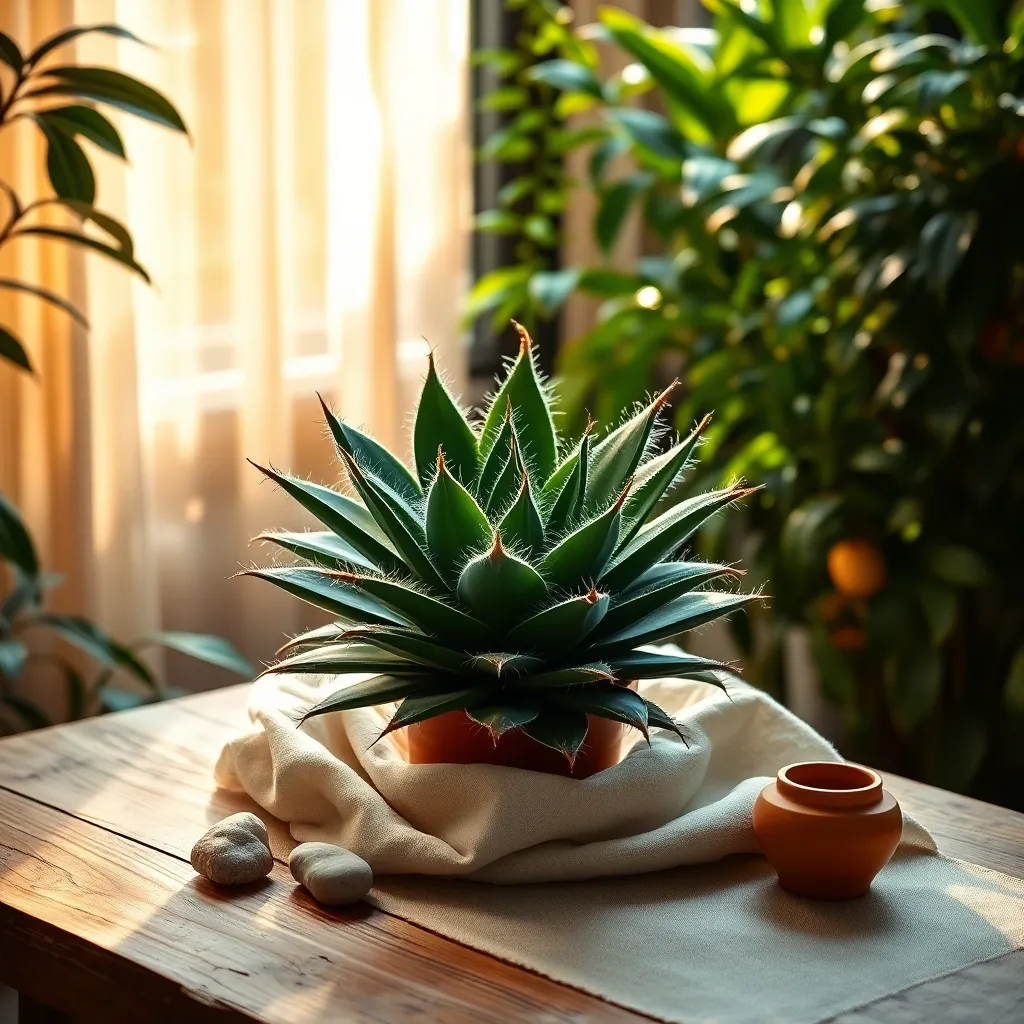
The Panda Plant, known scientifically as Kalanchoe tomentosa, is a delightful addition to any succulent collection. Its charming, fuzzy leaves covered in fine hairs not only make it visually appealing but also help reduce water loss, making it a great choice for those new to succulent care.
To ensure your Panda Plant thrives, it’s essential to provide it with bright, indirect sunlight. Direct sun can scorch its leaves, so placing it near a sunny window that filters light is ideal.
Watering is a critical aspect of Panda Plant care; it prefers a “soak and dry” method. Allow the soil to dry completely between waterings, typically every three weeks, depending on your home’s humidity and temperature.
For optimal growth, use a well-draining cactus or succulent mix, perhaps enhanced with a bit of perlite for added drainage. If you’re feeling adventurous, try propagating the Panda Plant by gently removing a leaf and allowing it to callous over before planting.
Lithops: The Living Stone Illusion
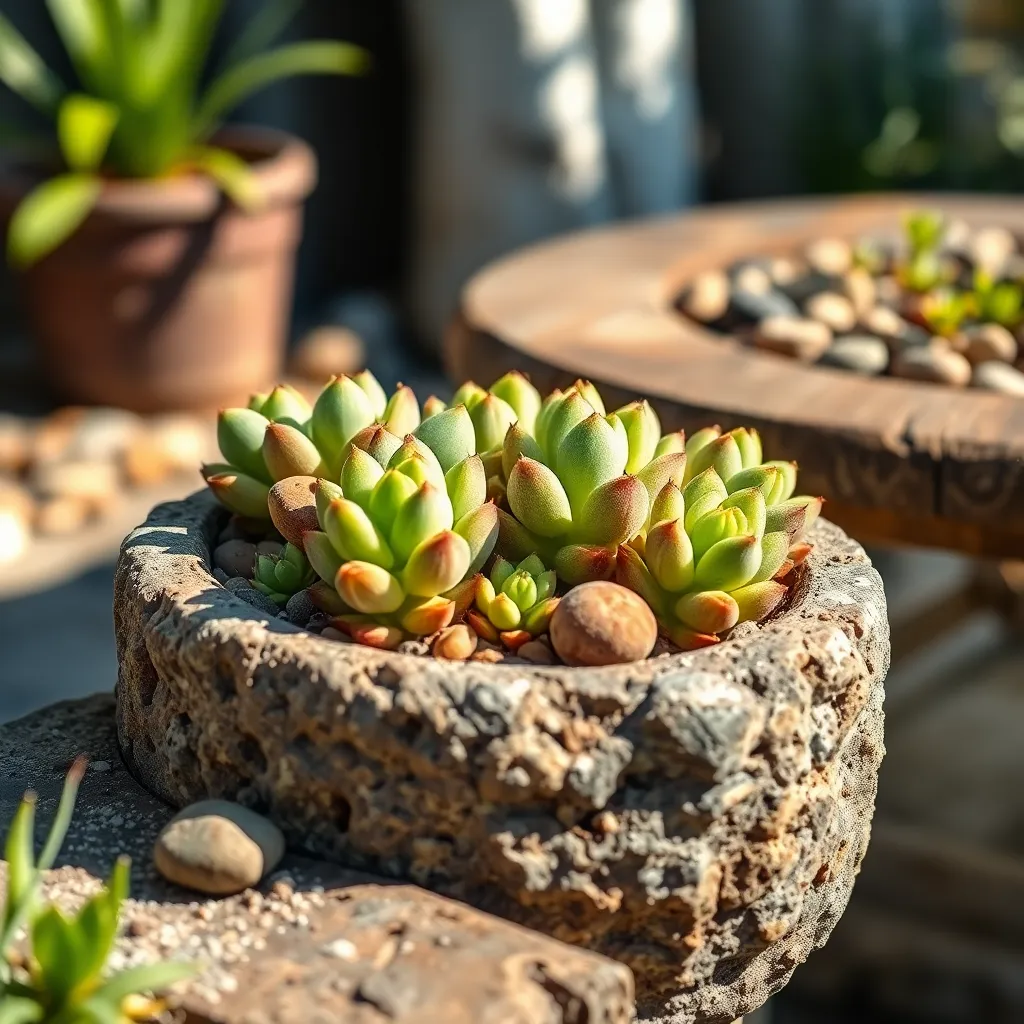
Often referred to as “living stones,” Lithops are a fascinating addition to any succulent collection. Their unique appearance mimics the pebbles and stones of their native habitat in Southern Africa, making them a stunning conversation starter.
To successfully grow Lithops, it’s essential to mimic their natural environment. They thrive in well-draining soil, so consider using a cactus mix or a 1:1 blend of potting soil and perlite to ensure proper drainage.
Watering Lithops requires a delicate balance, as overwatering can easily lead to rot. During their growing season, which typically starts in the fall, water them sparingly—allow the soil to dry out completely between waterings.
In the dormant summer months, reduce watering significantly to virtually none, as Lithops are adapted to survive long periods of drought. Place them in bright, indirect sunlight to maintain their vibrant colors and compact form, but avoid direct midday sun, which can scorch their leaves.
Advanced gardeners can experiment with propagation, though patience is key, as Lithops grow slowly. Propagation is usually done by seed, which requires a sunny spot and a bit of time, but the reward of new plants is well worth the wait.
Haworthia: Distinctly Textured Delight
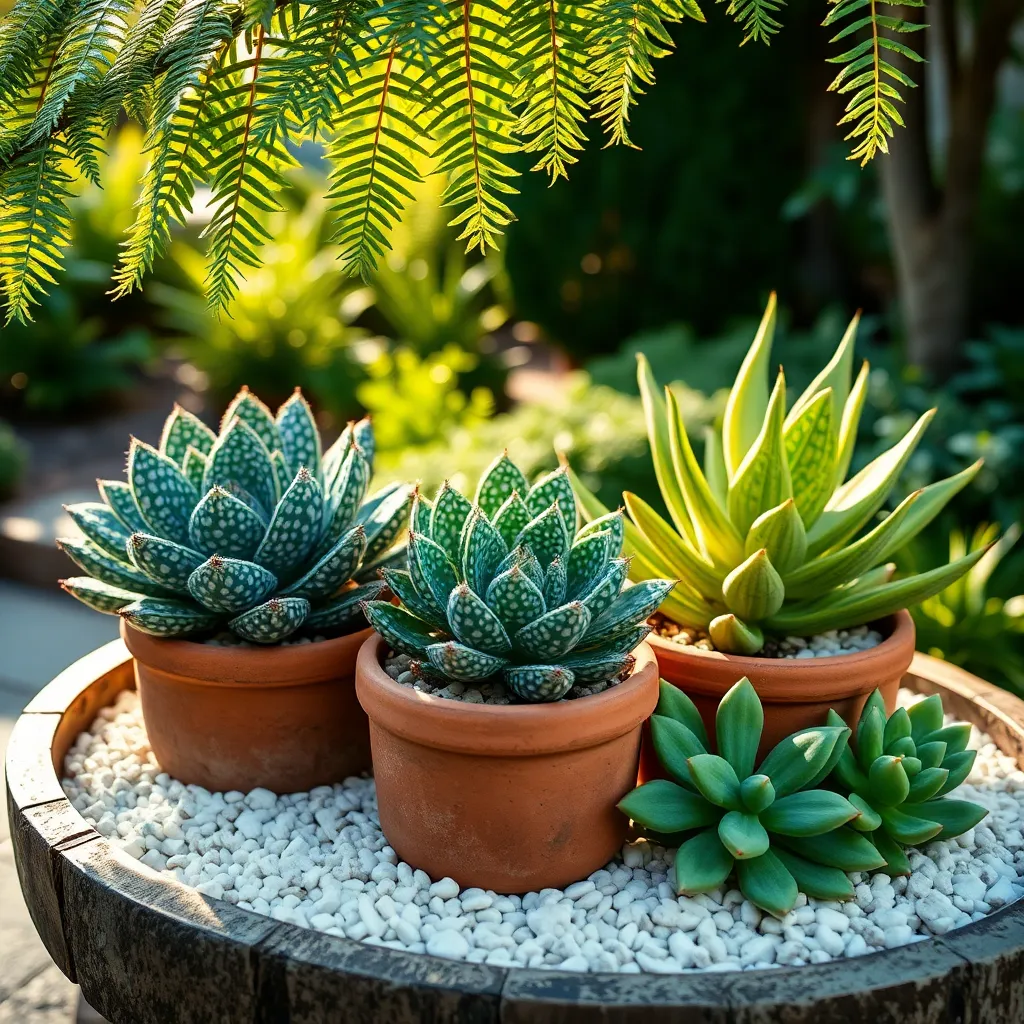
Haworthia, a succulent known for its strikingly textured leaves, is a perfect choice for both beginners and seasoned plant enthusiasts. These plants thrive in bright, indirect light, making them ideal for indoor spaces where direct sunlight might scorch other succulents.
To ensure optimal growth, plant your Haworthia in a well-draining cactus or succulent soil mix. This prevents root rot, a common issue when the plant sits in water for too long, by allowing excess moisture to escape quickly.
Water your Haworthia sparingly, letting the soil dry out completely between waterings. In general, a bi-weekly watering schedule is sufficient, but always adjust based on the humidity and temperature of your environment.
For those looking to propagate, Haworthias are quite cooperative, often producing offsets or ‘pups’ at their base. Gently separate these pups when they reach about an inch in diameter, and plant them in their own pots to expand your collection effortlessly.
Burro’s Tail: Trailing Tails of Green
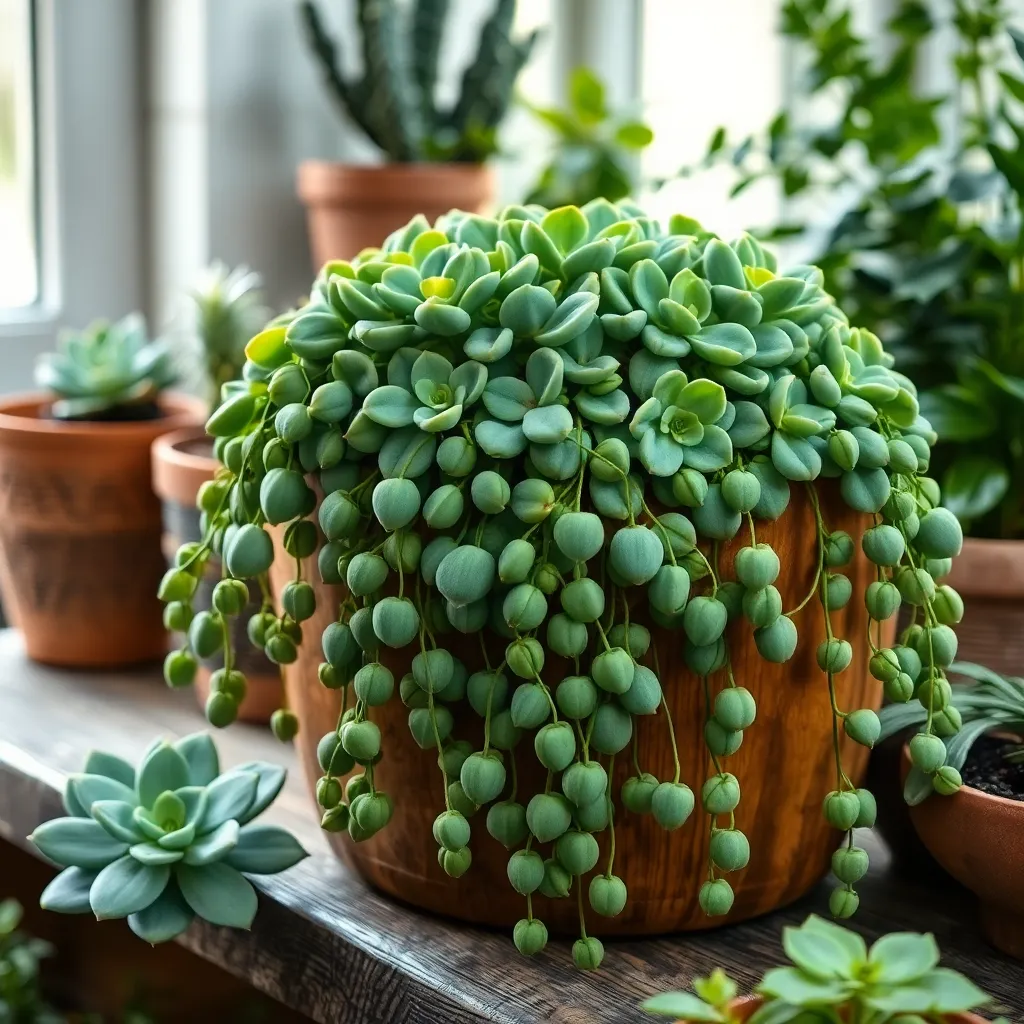
Among the most charming of succulents, the Burro’s Tail thrives when given the right conditions. It loves bright, indirect light, making it perfect for a sunny windowsill or a spot with filtered sunlight.
When it comes to soil, opt for a well-draining mix to prevent root rot. A cactus or succulent-specific soil is ideal, or you can make your own by mixing regular potting soil with perlite or sand.
Watering is key for the Burro’s Tail, as this plant is drought-tolerant and prefers to dry out between waterings. Water sparingly, about every two to three weeks, ensuring the soil is completely dry before the next drink.
For those looking to propagate, Burro’s Tail offers an easy opportunity. Simply take cuttings or gently twist off a few leaves, let them callous over for a day or two, and place them on top of moist soil.
Advanced gardeners can encourage fuller growth by occasionally rotating the plant to ensure even light exposure. Additionally, feeding with a diluted succulent fertilizer during the growing season can give your Burro’s Tail an extra boost.
Conclusion: Growing Success with These Plants
In exploring the ’11 Instagram-Worthy Succulents for Plant Lovers,’ we’ve delved into the nurturing parallels between cultivating thriving plants and fostering healthy relationships. From the importance of patience and understanding, akin to the slow growth of the Aloe Vera, to the resilience and adaptability mirrored in the hardy Jade Plant, each succulent embodies a vital relationship concept. The Zebra Plant reminds us of the beauty in diversity, while the String of Pearls teaches us about giving and receiving support. Through these natural analogies, we gain insights into trust, communication, balance, and growth—the cornerstones of any flourishing relationship.
Now that you’re inspired, take a moment to reflect on which succulent resonates most with your current relationship dynamics and identify one small action you can take today to nurture that aspect. As you embark on this journey of growth, be sure to save or bookmark this article as a constant reminder and guide.
Remember, just like a well-tended garden, a relationship requires ongoing care and attention. By embracing these lessons, you’re not only ensuring the vitality of your relationships today but also cultivating a future full of love and connection. Take action now and watch your relationships blossom beautifully.

